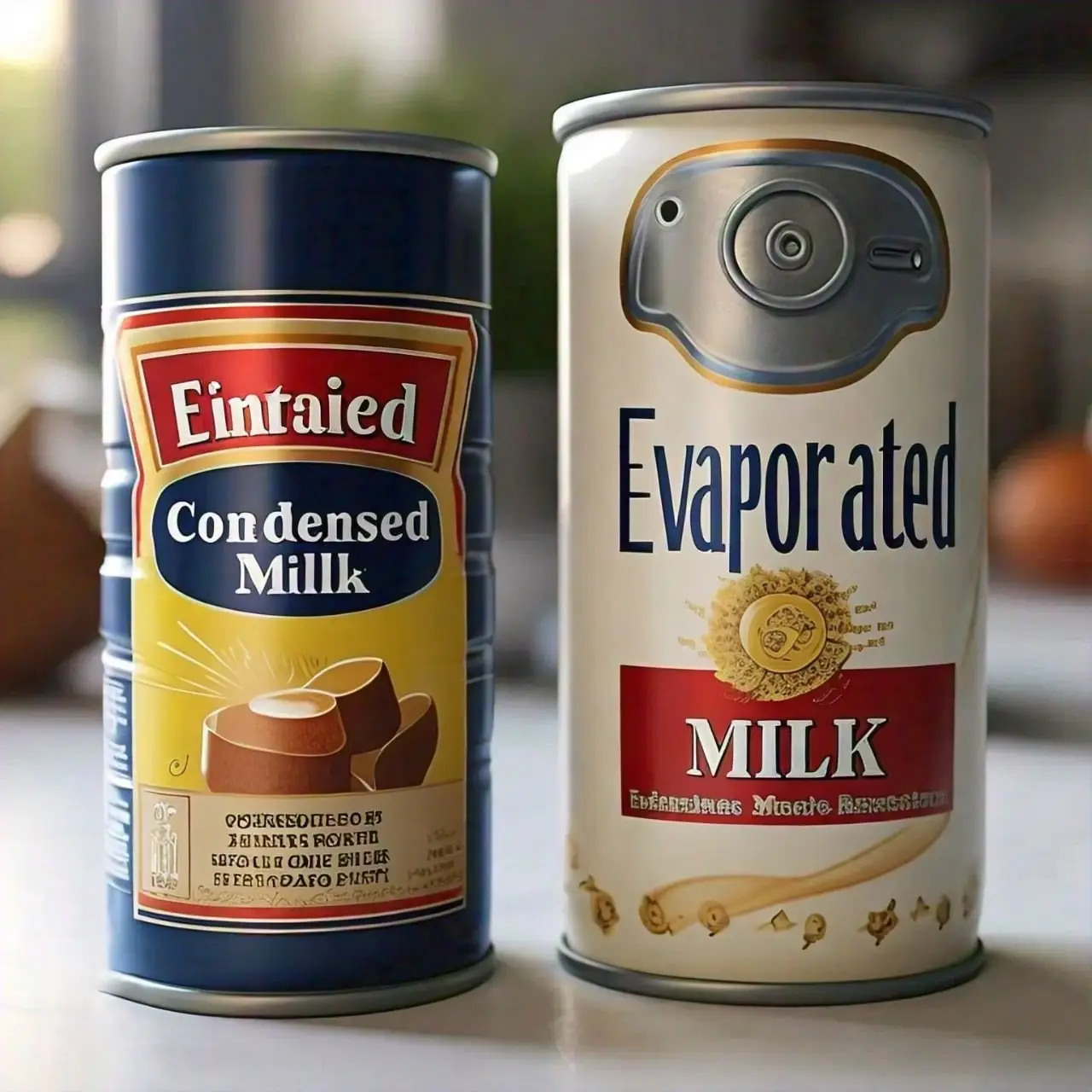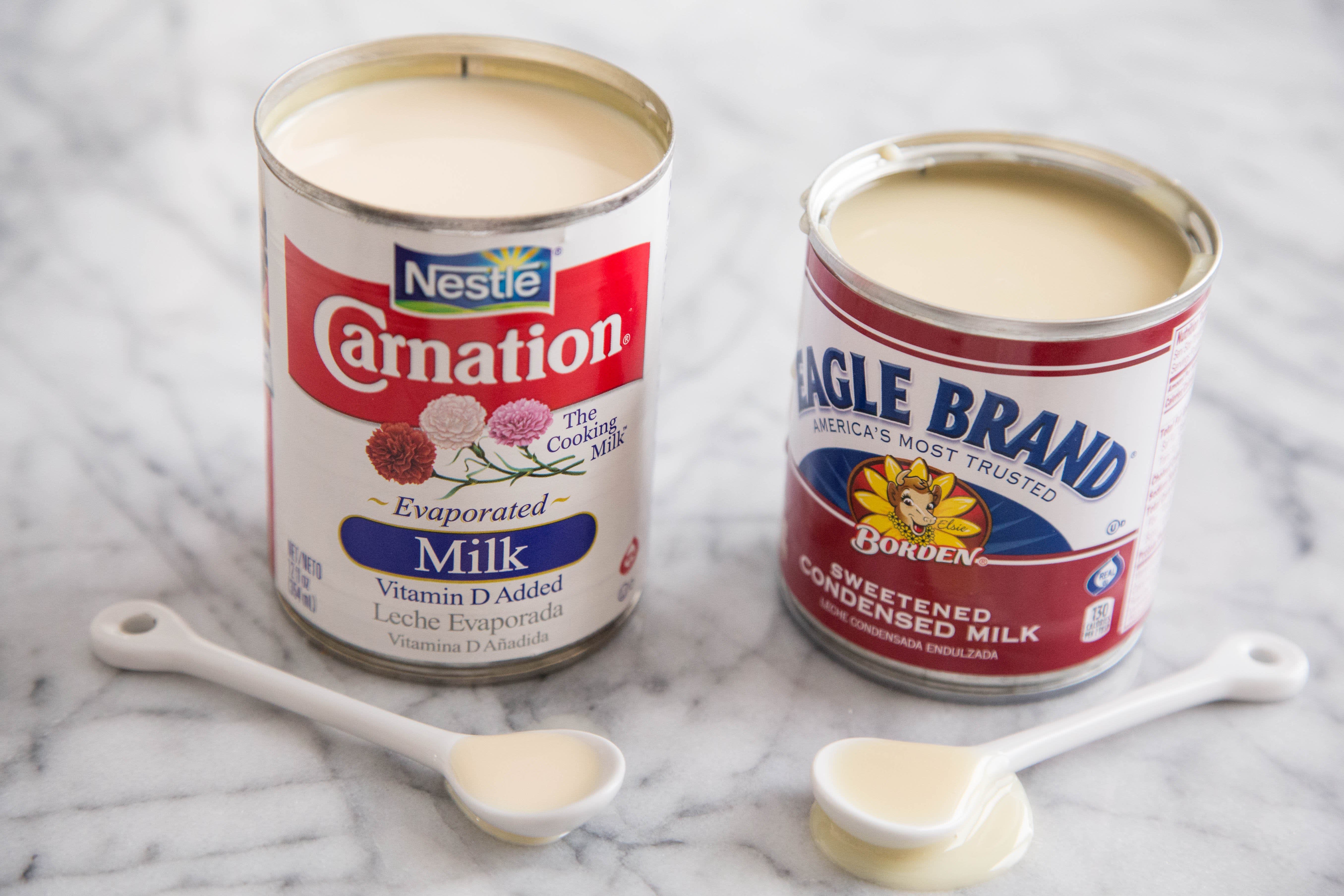Random Stories
Decoding the Differences: Is Condensed Milk the Same as Evaporated Milk?

Introduction to Condensed Milk and Evaporated Milk
The pantry can sometimes feel like a labyrinth filled with mysterious ingredients for cooking and baking. Among these, condensed milk and evaporated milk often spark confusion. They may sound similar and share some culinary roles but are far from interchangeable. If you’ve ever stood in the grocery aisle wondering about their differences or how to use them in your favorite recipes, you’re not alone. Let’s dive into the world of these two creamy staples to uncover what sets them apart—and help you make informed choices for your next delicious creation!
Is Condensed Milk the Same as Evaporated Milk?
Is Condensed Milk the Same as Evaporated Milk? While similar in texture and packaging, they differ significantly in composition and usage.
Many people often confuse condensed milk with evaporated milk. It’s a common mix-up, but they differ in composition and taste.
Condensed milk is sweetened; it includes sugar that gives it a thick, syrupy consistency. This sweetness makes it perfect for desserts and sweet treats.
On the other hand, evaporated milk is unsweetened and has a creamy texture due to the removal of water content through heating. It’s often used in savory dishes or as a coffee creamer.
Both types serve distinct purposes in cooking and baking, catering to various preferences. Understanding these differences can elevate your culinary creations significantly!
The Process of Making Condensed and Evaporated Milk
The production of condensed and evaporated milk begins with fresh cow’s milk. Both processes start similarly, but the outcomes are quite different.
For evaporated milk, about 60% of the water is removed from the milk through gentle heating. It results in a thicker product that retains its natural flavor and nutrients. The process also ensures a longer shelf life without added sugar.
Condensed milk takes a sweeter route. Sugar is combined with whole milk before it undergoes evaporation. This mixture is heated until approximately 60% of the water content vanishes, resulting in an incredibly sweet, syrupy consistency.
Both processes require careful temperature control to avoid scorching or curdling, ensuring quality everyone can produce. Each type serves unique culinary purposes while showcasing how slight variations lead to distinct products on your kitchen shelf.
Nutritional Differences Between Condensed and Evaporated Milk
Condensed milk and evaporated milk differ significantly in nutrition. Condensed milk is sweetened, which boosts its calorie count. One tablespoon can contain around 60 calories or more, primarily from sugar.
On the other hand, evaporated milk is unsweetened and has a richer texture with fewer calories. A similar serving size packs about 30 calories without the added sugars.
The fat content also varies between the two. Sweetened condensed milk tends to have higher fat levels due to added creaminess for flavor enhancement. Conversely, evaporated milk offers a lighter option while retaining some healthy fats.
Both types of milk contain vitamins and minerals but in different ratios. Evaporated milk usually boasts higher calcium levels than its sweet counterpart, making it a better choice for those who want to focus on bone health without excessive sugar intake.
Common Uses for Condensed and Evaporated Milk in Recipes
Condensed milk and evaporated milk each have their distinct culinary roles.
Condensed milk is a sweetened delight often found in desserts. It’s the star ingredient in classic treats like key lime pie, fudge, and various no-bake recipes. Its thick consistency adds creaminess while providing that irresistible sweetness.
On the other hand, evaporated milk shines as a versatile cooking companion. Chefs love to use it for creamy soups, savory sauces, and casseroles. It offers richness without overwhelming dishes with sugar.
Both kinds of milk can transform beverages, too! Condensed milk makes coffee or tea luxuriously sweet and velvety, while evaporated milk enhances smoothies with a smooth texture.
In baking, condensed milk adds moisture and flavor depth to cakes or cookies. Evaporated milk is perfect for custards or puddings where you want that creamy mouthfeel without extra sweetness.
The possibilities are endless when incorporating these unique ingredients into your meals!
Substituting Condensed or Evaporated Milk in Recipes
When you find yourself without condensed or evaporated milk, don’t panic. Several substitutes can work wonders in your recipes.
Mix regular milk with sugar for sweet dishes, calling for condensed milk. Heat the two together to create a thick, syrupy texture. It will resemble the sweetness and consistency of condensed milk.
If you want to replace evaporated milk, a simple combination of whole milk and heavy cream can do the trick. The richness adds depth while maintaining that creamy quality reminiscent of evaporated milk.
Plant-based options exist, too! Coconut or almond milk can be adjusted with thickeners like cornstarch for those who prefer dairy alternatives.
Experimenting is key. Each substitute will slightly alter flavor profiles and textures but can lead to delightful surprises in your cooking adventures.
Comparing Prices of Condensed and Evaporated Milk
Price differences can catch your attention when shopping for condensed and evaporated milk. Both products are typically affordable staples in the grocery aisle. However, variations can arise based on brand and packaging.
Condensed milk often comes in cans alongside a few specialty flavors, which may drive the cost. Due to added ingredients like sugar, it might be priced slightly higher than its evaporated counterpart on average.
Evaporated milk tends to be more straightforward in formulation. It is usually less expensive because it’s concentrated milk without additional sweeteners.
Store brands often offer an economical choice for both types of milk. Checking unit prices helps identify the best deal while shopping. Keep an eye out for sales or bulk-buy deals; they can make a noticeable difference over time.
Conclusion: Which One Should You Use?
When choosing between condensed and evaporated milk, the decision largely depends on your recipe and taste preferences. Condensed milk is your go-to option if you’re looking for sweetness and richness. It’s perfect for desserts like pies, fudge, or even coffee.
On the other hand, if you want a creamy texture without added sugar, opt for evaporated milk. It works wonders in savory dishes like soups or casseroles.
Understanding their differences can enhance your cooking experience. Each milk type has unique applications that can elevate your culinary creations. So whether you’re baking a cake or whipping up a creamy pasta dish, knowing which one to use will make all the difference in achieving that delightful flavor profile you desire.
Stay connected with Ms. Magazine for the latest empowering insights and updates that are worth your attention!


:max_bytes(150000):strip_icc()/evapcondensedmilk1-56a495913df78cf772831d60.jpg)



